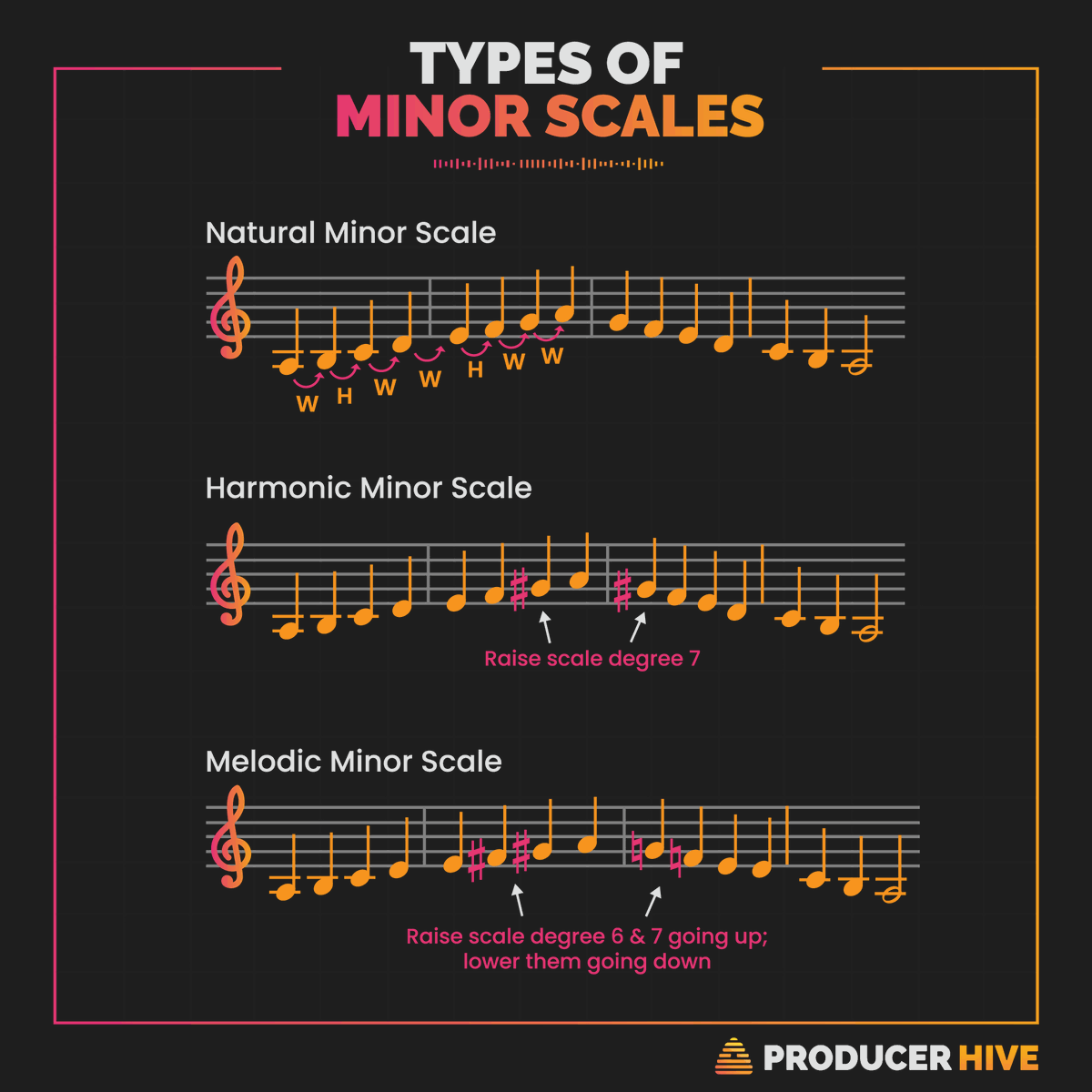
In C this would result in the following notes: C D Eb F G A B (or C D D# F G A B)Īnd there you have it! The natural, harmonic and melodic minor scales!īelow you will find a diagram of all three scales discussed in this guide, across the entire fretboard. (when played descending, it’s the same as the natural minor scale)Īs you can see the difference between the melodic minor scale and the major scale is the 3rd note has been flattened by half a step, the difference between this and the natural minor is the 6th and 7th notes have been sharpened by half a step. The formula for the melodic minor scale (ascending) is: In C this would result in the following notes: C D Eb F G Ab B(or C D D# F G G# B)ī3 –Ebaug7 or Ebmaj7#5
#Natural harmonic and melodic minor scales guitar plus#
(the WH being a whole step plus a half step, or 3 frets.)Īs you can see the difference between the harmonic minor scale and the major scale is the 3rd and 6th notes have been flattened by half a step, the difference between this and the natural minor is the 7th note has been sharpened by half a step. The formula for the harmonic minor scale is: The chords that correspond to each of these notes are: In C this would result in the following notes: C D Eb F G Ab Bb (or C D D# F G G# A#) The formula for the natural minor scale is:Īs you can see the difference between the natural minor scale and the major scale is the 3rd, 6th and 7th notes have been flattened by half a step. Now before I get to the theory, here is a great example of the natural minor scale being squeezed of all it’s juice, by none other than the great Wes Montgomery! So let’s concentrate on the C Aeolianscale.įrom now I will be referring to it as the natural minor scale to avoid confusion with mode theory. Now to truly understand the Aeolian scale, and also the Harmonic and Melodic Minor scales (both of which aren’t modes of the major scale) we need to look at it isolation, that is, away from it’s mother major scale. That has some impact on the chords, but retains the essential E7 to Amin pull, and smooths out the melodies. So to smooth things out, they raised the 6th a half step too, making it F#. However, that scale sounds a little weird because the minor 3 between F and G# jars the ear a bit (and sounds like instant Ritchie Blackmore too…). Seeing as this scale was constructed in order to harmonise the natural minor scale, it is no wonder that it has the name: harmonic minor scale. Also, the Emin7 is now an E7, which pulls your ear to the 1 chord – the Amin.So basically the harmonic minor scale gives you chords that pull you to the tonic of the scale, as opposed to the natural minor scale which pulled you to the relative major (because the relative minor is built from the major). First of all, the G7 is now G#diminished, and doesn’t pull you to the C, while the C chord is now Caug – not a common sound your ear feels has resolution. So, the natural minor scale was altered slightly for harmonic reasons the 7th note of the scale was raised half a step, and the result is the harmonic minor scale – That chord pulls your ear to CMaj7, not to the Amin7 which is the 1 chord. If you look at the chord built on G, you see it’s G7. They also happen to be the same chords as the key of C major. The above cluster of notes are the chords that occur naturally in the A natural minor scale (Aeolian). This is easy to see if we look at the A natural minor scale harmonized… In other words, your ears tune into the relative major tonality of the scale rather than the minor, so if you’re playing in A minor, it will at times sound like you are playing in C major. The problem is that when you harmonize the scale, the chords don’t pull you to the 1, but rather to the 3. The scale sounds minor, and if melody is all you’re interested in, it does the job.


The A Aeolian scale (as part of the C major scale) uses the same notes, but the 1 (root) is now A, instead of C, so it looks like this: A B C D E F G Which in C would = C D E F G A B(then back to C again, but at a higher octave.) When you play an A Aeolian as part of the C major scale then they both share the same notes for example, the pattern for the major scale is: (W = whole step – 2 frets), H = half step – 1 fret) In the Key of C major, the Aeolian mode is A minor therefore A minor is the relative minor of C major: every major chord has a relative minor. This post we’re going to be discussing three minor scales: the Natural Minor scale (Aeolian mode), the Harmonic Minor Scale, and the Melodic Minor Scale.Īs you probably know already from my guide on the Modes of the Major Scale, the 6th mode of the major scale is always the natural minor scale, or the Aeolian mode.


 0 kommentar(er)
0 kommentar(er)
